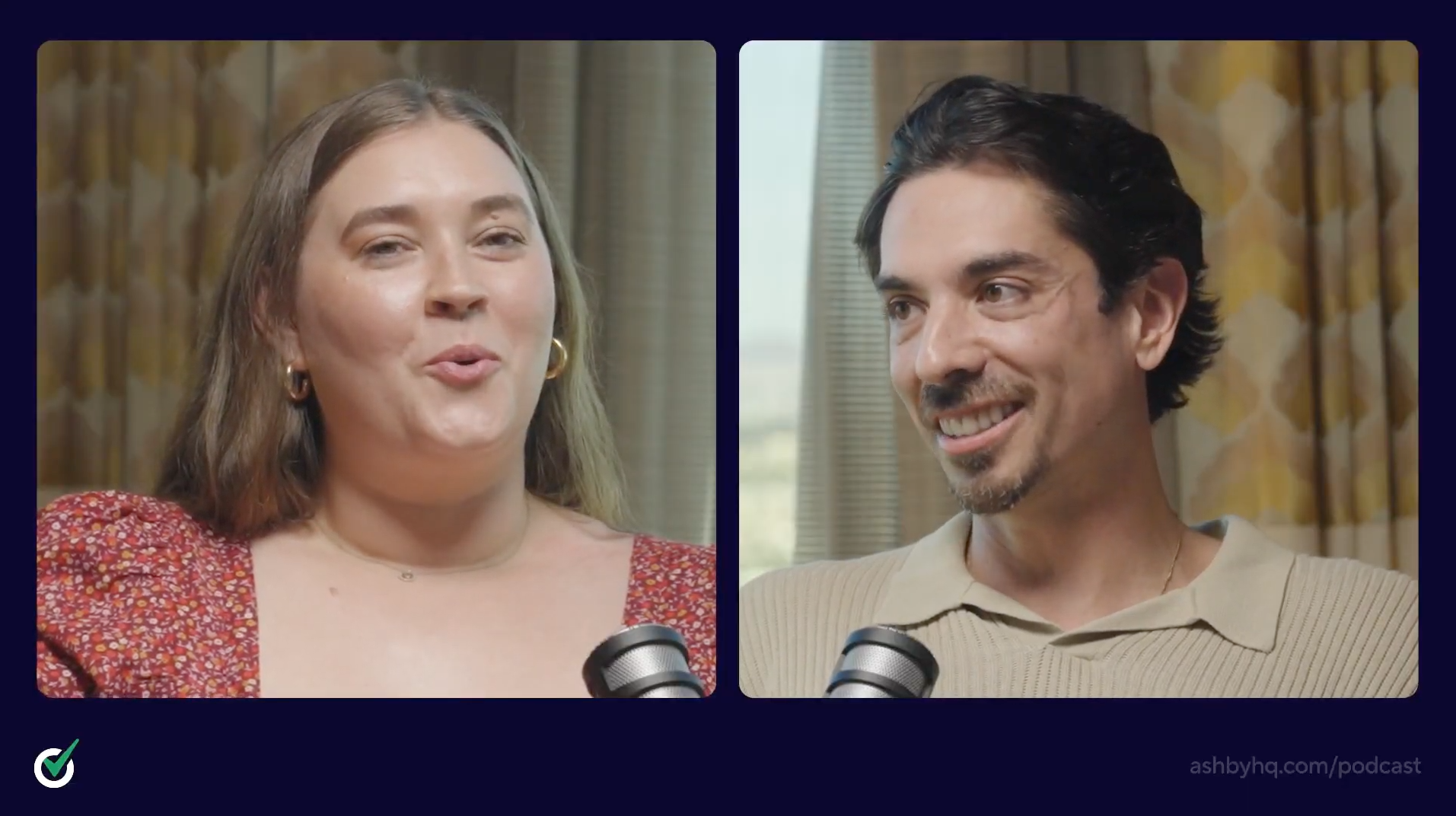Securing Talent's Voice in Headcount Strategy
About this Episode
Mario Espindola is the Senior Director of Talent and Operations at SignalFire, where he advises portfolio companies on scaling their hiring infrastructure and aligning talent strategy with business goals. With a background spanning agency, in-house, and venture environments, Mario brings a practical, operational lens to workforce planning.
In this episode of Offer Accepted, Mario explains how TA leaders can move from reactive hiring to proactive headcount ownership. He shares the data points you need to come prepared, how to clarify your role with frameworks like RACI, and why understanding business metrics like ARR and CAC makes you indispensable. This episode is essential listening for any talent leader ready to influence planning, not just execute it.
Topics
This Episode's Guest
Mario Espindola
Senior Director, Talent and Operations @ Signal Fire
Mario Espindola is the Senior Director of Talent and Operations at SignalFire, where he partners with portfolio companies to scale hiring processes, align with finance and operations, and build long-term talent strategy. With 15+ years of experience across executive search, public companies, and high-growth startups, Mario blends data-driven decision-making with a deep understanding of business goals. He’s passionate about turning recruiting teams into strategic, high-performing functions.
Takeaway 1
Use data to shape the plan before it is finalized 📊
Being invited into the planning process starts with being credible. Mario explains that credibility is built through data, not instinct. Strong talent leaders don't just raise concerns about unrealistic plans. They show why those plans won't work using hard numbers.
Why It Matters:
When talent acquisition leaders rely on data instead of opinion, they earn the right to influence hiring plans. Bringing the right data to the table helps shape hiring strategy from the start rather than reacting once decisions are already made.
Quick Tips:
- Know your team’s recruiter capacity. Mario recommends tracking how many roles each recruiter can support at once. Use past performance to inform future hiring pace.
- Use time-to-fill benchmarks to drive sequencing. Historical data on how long it takes to hire certain roles gives you leverage when helping the business prioritize.
- Use comp data to challenge assumptions. Mario shared that hiring plans often assume top talent can be hired quickly and below market. Bringing compensation benchmarks by level or location helps reframe expectations before plans are locked in.
Takeaway 2
Clarify roles in headcount planning with a RACI model 🤝
If recruiting is involved but not clearly responsible for anything, value gets lost. Mario recommends using a simple RACI or DACI model to define ownership. This ensures talent acquisition is seen as a key contributor, not just a passive participant.
Why It Matters: Without role clarity, planning becomes chaotic. TA ends up reacting instead of guiding. Clear ownership means the right people are involved at the right time, which improves efficiency and helps hiring plans align with business goals.
Quick Tips:
- Introduce a project plan early. When Mario joined a new company as head of talent, he brought his own headcount planning doc. It outlined how he planned to contribute and what inputs TA would need to be successful.
- Don’t let assumptions define your role. Mario pointed out that finance and ops often move forward assuming they own prioritization and sequencing. If TA doesn’t clarify where it fits, the answer gets decided without them.
- Frame your inclusion as a business decision, not a visibility play. Mario was clear that being in the room isn’t about optics. It’s about making hiring plans more realistic, more efficient, and more likely to succeed.
Takeaway 3
Learn the business metrics behind the hiring plan 🧠
To influence planning, you have to understand what the business is solving for. Mario shares how, in his first head of talent role, he quickly realized he needed to understand the full picture. That meant understanding the company’s revenue targets, customer goals, and product roadmaps in addition to knowing what roles were open.
Why It Matters: Hiring doesn't happen in a vacuum. When TA leaders understand company metrics like ARR, CAC, and sales ramp time, they can connect headcount to outcomes. This earns trust from cross-functional leaders and helps TA recommend better hiring strategies.
Quick Tips:
- Ask what business goals are driving headcount. Mario encourages talent leaders to ask about ARR targets, new market expansions, and product timelines. That context informs who, when, and where to hire.
- Use ratios to tie headcount to outcomes. Metrics like ARR per AE or customer coverage per CSM help frame hiring needs in business terms. They shift the conversation from requests to impact.
- Make your planning inputs business-first. Instead of asking how many engineers are needed, ask what outcomes the team is accountable for. Then build the hiring plan around that.
What Hiring Excellence Means to Mario
For Mario, Hiring Excellence starts with structure. That means well-run intakes, clarity about who owns what, and recruiting processes that earn trust. He believes structured hiring creates better experiences for hiring managers and candidates. It sets expectations early, aligns the team around what good looks like, and helps recruiting operate with confidence and consistency.
>> Watch the Clip

Mario's Recruiting Hot Take 🔥
Posting vague, catch-all job reqs hurts more than it helps. Mario believes these roles create false hope for candidates and waste time for recruiters. Unless you have a talent community strategy in place and the systems to engage at scale, don’t publish generic openings. They damage your brand and rarely result in quality hires.

Timestamps
(00:00) Introduction
(02:36) The role of leaders in headcount conversations
(04:48) Growing skill sets in talent leadership
(09:05) Understanding the market as a talent leader
(11:18) Establishing credibility in headcount planning
(17:08) The importance of data in talent acquisition
(24:05) Structuring conversations with leadership
(27:04) What hiring excellence means
(30:17) Mario’s recruiting hot take
(34:09) The impact on talent brand
Other Episodes
Internal Mobility's Positive Impact on Employee Experience
In this episode of Offer Accepted, Dr. Kalifa Oliver, Ford's Director of People Analytics, sits down with host Shannon Ogborn to discuss the role a strong internal mobility program can play in employee experience.
Simplifying Recruiting Metrics to Improve Team Performance
In this episode of Offer Accepted, Bryan Power, Chief People Officer at Nextdoor, shares how recruiting teams can simplify their process using the AAA framework: Attraction, Assessment, and Acquisition. Shannon and Bryan discuss how breaking the funnel into distinct stages helps teams identify where things are going wrong and take action with more clarity. Whether you're leading a small team or scaling operations, this episode offers practical ways to use data, structure, and empathy to improve hiring outcomes.

Join the Hiring Excellence movement
New episodes every month - subscribe here so you never miss out.
